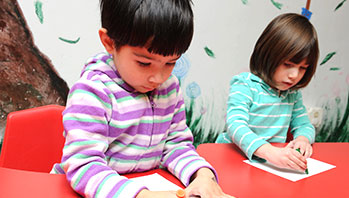- crayons
- markers
- paper
- explore
- observe
- senses
MA Standards:
Writing/W.PK.MA.2: Use a combination of dictating and drawing to explain information about a topic.
Speaking and Listening/SL.PK.MA.5: Create representations of experiences or stories and explain them to others.
Speaking and Listening/SL.PK.MA.6: Speak audibly and express thoughts, feelings, and ideas.
Head Start Outcomes:
Approaches to Learning/Initiative & Curiosity: Demonstrates flexibility, imagination, and inventiveness in approaching tasks and activities.
Approaches to Learning/Initiative & Curiosity: Demonstrates eagerness to learn about and discuss a range of topics, ideas, and tasks.
Logic & Reasoning/Problem Solving: Uses past knowledge to build new knowledge.
Logic & Reasoning/Symbolic Representation: Represents people, places, or things through drawings, movement, and three-dimensional objects.
Literacy Knowledge/Early Writing 2: Recognizes that writing is a way of communicating for a variety of purposes, such as giving information, sharing stories, or giving an opinion.
Literacy Knowledge/Early Writing 3: Uses scribbles, shapes, pictures, and letters to represent objects, stories, experiences, or ideas.
Science Knowledge/Scientific Skills & Method 4: Collects, describes, and records information through discussions, drawings, maps, and charts.
PreK Learning Guidelines:
English Language Arts/Language 3: Communicate personal experiences or interests.
English Language Arts/Composition 16: Use their own words or illustrations to describe their experiences, tell imaginative stories, or communicate information about a topic of interest.
Draw and Write Together: What Did We See?

© Commonwealth of Massachusetts, Department of Early Education and Care (Jennifer Waddell photographer). All rights reserved.
Review the charts you made with children today. Then ask children to think of one special thing they explored today that they want to record and save in a group book titled "Our Observations."
Ask children to think about things they explored outside. Ask,
- What did learn about the <tree> that you didn’t know before?
- Draw a picture of what you learned about the <tree> as you observed.
After children have completed their drawings, have them discuss what senses they used to observe the <tree>. Then have them dictate or write to describe their observation. Write the sentence on the bottom of each drawing:
I <sense> the <object>. It was <description>.
I <touched> the <leaf>. It was <smooth>.
Encourage children to think about how drawing to record helps them learn more about what they observe. Assemble drawings into an “Our Observations” class book and place it in the Library Center.
